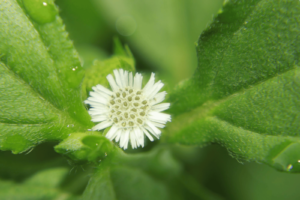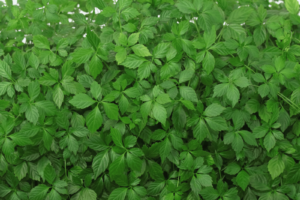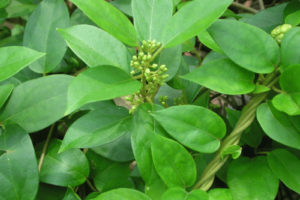WHAT IS FEVERFEW FLOWER EXTRACT?
Feverfew flower extract is extracted from the plant Tanacetum parthenium, which belongs to the Asteraceae family. The term “feverfew” comes from the Latin word “febrifugia,” which means “fever reliever.” It was traditionally used to treat fevers and other inflammatory diseases, earning it the moniker “mediaeval aspirin.” Feverfew has a variety of active ingredients, such as flavonoids and volatile oils, but the most important compound of interest is parthenolide, which is found largely in the plant’s leaves.

Parthenolide is thought to be responsible for many of feverfew’s possible health advantages. For years, it has been used to treat migraines, which are characterised by severe headaches on one side of the brain, typically accompanied with throbbing and pulsating.
WHAT ARE THE HEALTH BENEFITS OF FEVERFEW FLOWER EXTRACT?
Here are some of the alleged benefits of Feverfew flower extract:
- May relieve migraine: For generations, feverfew has been used as a natural migraine treatment. Migraines are characterised by moderate to severe headache pain, usually on one side of the head, and throbbing, pulsating, or hammering feelings. Feverfew research has shown potential pathways by which it may help reduce migraines. Parthenolide and tanetin, two compounds contained in feverfew, have showed promise in test-tube research by suppressing the formation of prostaglandins, which are substances known to cause inflammation. Human investigations on the usefulness of feverfew in the treatment of migraines, on the other hand, have generated conflicting results. In a review of six trials including 561 participants, four studies revealed that feverfew reduced the incidence and intensity of migraines, whereas two studies found no meaningful benefit. Furthermore, the improvement in the studies that did show a benefit was just marginally greater than a placebo.

- Other potential benefits: Aside from its potential involvement in migraine therapy, feverfew flower extract has shown a number of other potential health benefits:
Anti-cancer effects: Certain compounds present in feverfew have been shown in test tubes to have the ability to prevent the growth of particular cancer cells. While additional research is required to assess the extent of its efficacy, this property implies the possibility of further investigation in the field of cancer therapy.
Pain relief: Feverfew has anti-inflammatory effects, which may make it useful for pain reduction in disorders other than migraines. These characteristics may be beneficial for those suffering from various types of pain, but further research is needed to prove their effectiveness.
Elevated Mood: Feverfew has been shown in animal studies to help alleviate anxiety and depression symptoms. However, human research on this area is still limited, and more studies are needed to confirm these findings.
In summary, while feverfew flower extract is most known for its ability to relieve migraines, it also has anticancer properties, pain reduction, mood enhancement, and the treatment of skin diseases such as rosacea. However, the efficacy of feverfew in these applications has to be investigated further through clinical studies and more study.
HOW DOES FEVERFEW FLOWER EXTRACT WORK IN HUMAN BODY?
When feverfew flower extract is consumed, it triggers a sequence of reactions in the human body. Feverfew has various active compounds, the most important of which is parthenolide, which is found largely in the plant’s leaves. Many of the plant’s possible health properties are thought to be attributed to parthenolide. The active ingredients in feverfew are absorbed in the stomach and then transferred into the bloodstream after consumption. These compounds have a variety of effects on the body.
In test-tube investigations, parthenolide, for example, has been shown to block the synthesis of prostaglandins, which are compounds that cause inflammation. Because migraines frequently include inflammation and dilatation of blood vessels in the brain, this activity is thought to be significant to its potential in migraine management. Parthenolide may also inhibit serotonin receptors, stopping blood platelets from producing inflammatory chemicals, restricting blood arteries in the brain, and reducing smooth muscle spasms.

These acts are relevant to the migraine headache processes. However, while these mechanisms have been found in vitro, human studies on feverfew’s effects have been variable, and more research is needed to determine its precise mechanisms of action and effectiveness in the human body. The absorption, distribution, and inhibition of certain routes can differ depending on the individual and the health situation under consideration.
HOW MUCH FEVERFEW FLOWER EXTRACT CAN A PERSON TAKE?
Individuals’ responses to feverfew flower extract dosage can vary, and there is no official recommended dose. However, several research have revealed a possible dosage range for migraine headache management. Individuals should try taking 100-300 mg of a feverfew supplement containing 0.2-0.4 percent parthenolide. This dose can be used 1-4 times per day to effectively treat migraine headaches. It should be noted that these suggestions are based on the limited information available, and individual responses may differ.
Feverfew comes in a variety of forms, including supplements, fluid extracts, tinctures, and tea. While it is often used to treat migraines, there is not enough evidence to recommend it for other uses, such as arthritis alleviation. When using feverfew, it is crucial to use caution and examine individual suitability, as it may not be suitable for everyone, and potential interactions with certain medications should be considered. Before introducing feverfew into your regimen, contact a medical expert or your doctor if you are unsure or have specific health concerns.
WHAT ARE THE VARIATIONS OF FEVERFEW FLOWER EXTRACT?
Feverfew Flower Extract is also available as:
- Feverfew Flower Extract 0.2% Parthenolides (Tanacetum parthenium)
- Feverfew Flower Extract 10:1 (Tanacetum parthenium)
- Feverfew Flower Powder (Tanacetum parthenium)
Feverfew Flower Extract is commonly available in:
- Feverfew Flower Extract capsules
- Feverfew Flower powder extract
- Feverfew Flower liquid extract
Glentworth Formulations is here to suit your every need. Everything from Tablets, Capsules and Powder blends.
If you are wanting to know more information, please get in contact with us. Either using the contact form or contacting us directly on: [email protected]


